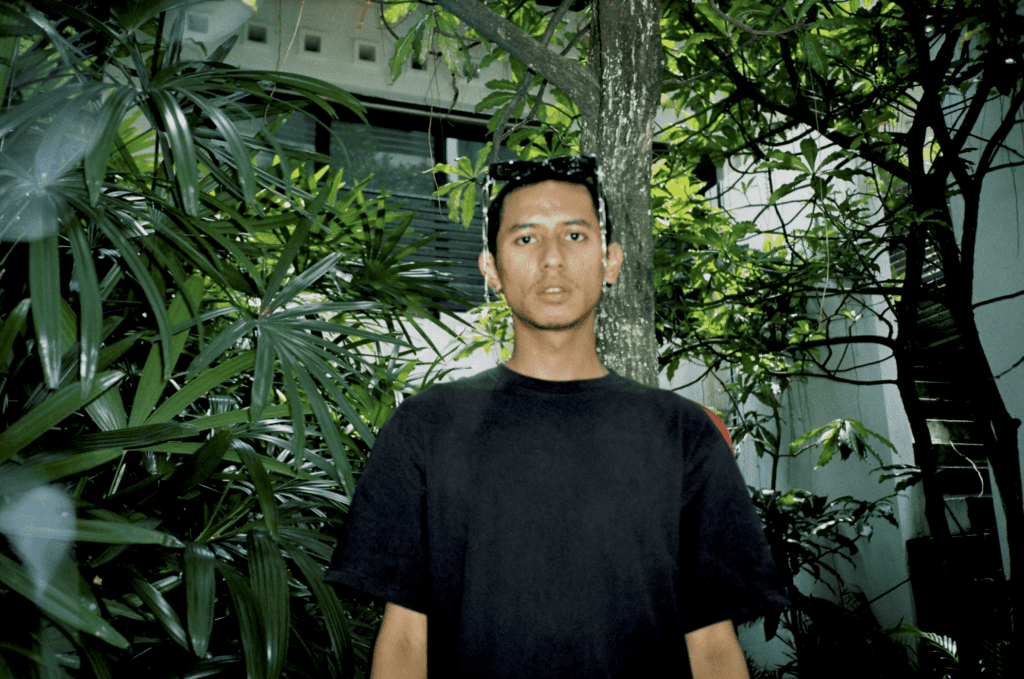Juxtaposing his outer appearance, Adam’s personality can be described as a rainbow – intense with every emotion just like his artistic oeuvre.
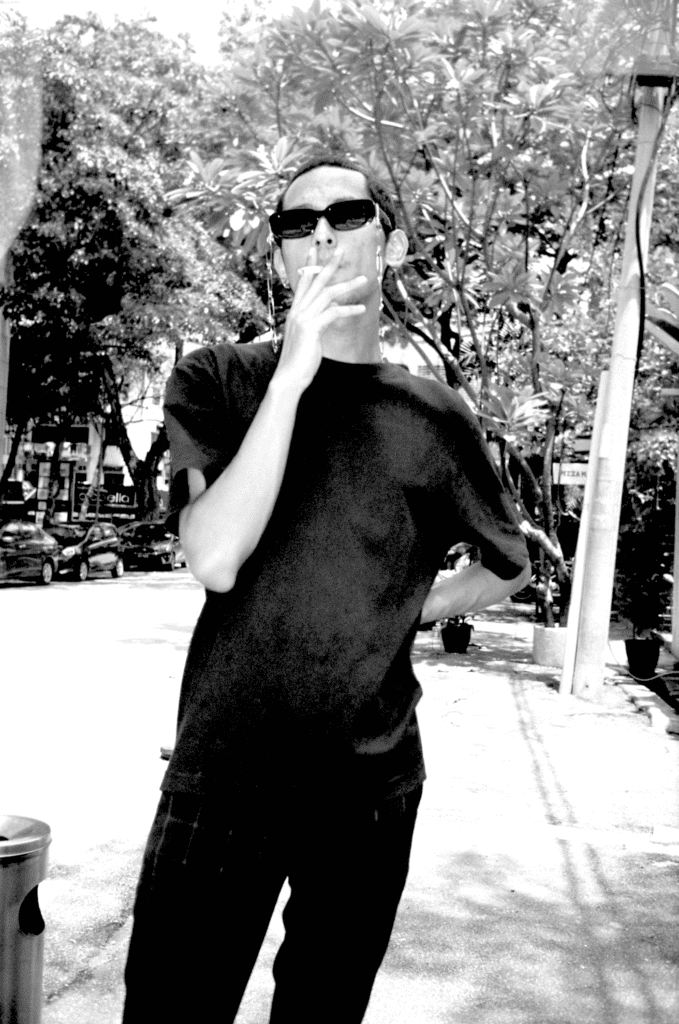
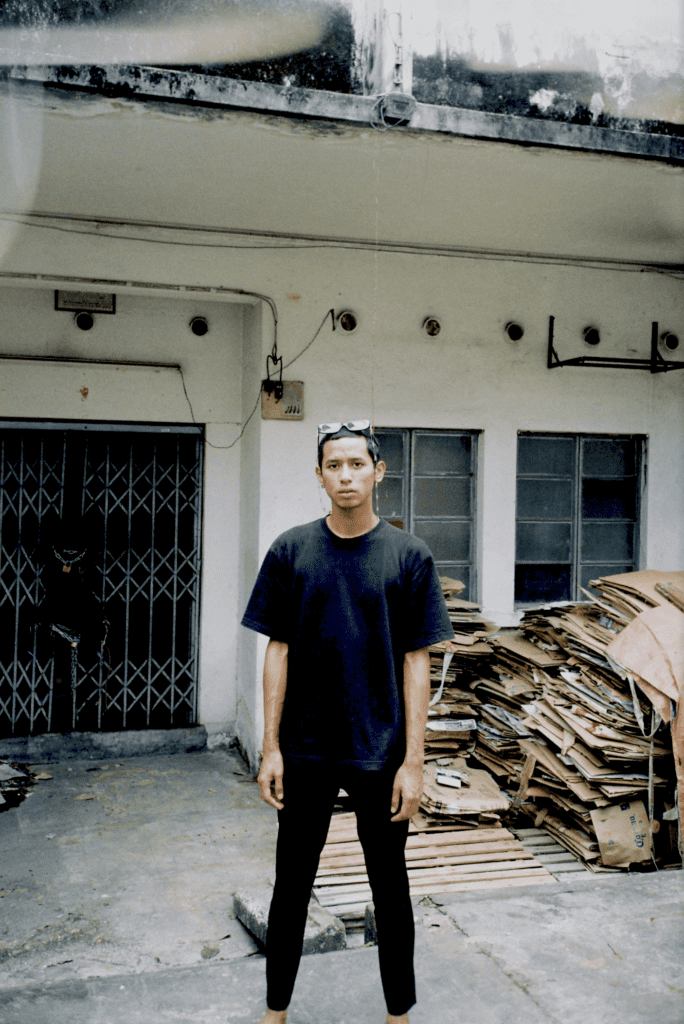
Photo by Pravin Nair (Sponsored by Bang Bang Geng)
The young, emerging artist is making his way through the local KL art scene with love and an eye for fashion, “I keep talking about fashion but that’s how I always see things, that’s how my brain works”. Adam’s initiation into the art world started with an interest in fashion design. “When I dropped out of high school at 16, I actually wanted to become a fashion designer,” he explains. “I thought it would be my one true calling but I hated sewing and tailoring. I just wanted to sketch and for the designs to appear like poof!”
Citing Rei Kawakubo as one of his biggest inspirations, Adam was slowly introduced to avant-garde and conceptual art; which is evident in his work. He uses abstract imagery in bright colours and geometric psychedelic patterned shapes to symbolize the inner workings of the human brain and spirit. However, it was only after seeing Dior’s Fall 2012 Couture show where Raf Simons collaborated with artist Sterling Ruby that his eyes were truly opened to how he could one day achieve his dreams of working in fashion design through other artistic ventures like painting.
As his plate of French toast finally arrives, Adam tells me that he rather have an “organic” interview, like a conversation with a friend which conveniently describes how he approaches his own creative practice: “For me, art is just about feeling less alone in this world and connecting with other people: the creative community, my local community, the world and the greater international art communities.”
Utilising his Instagram account as his very own virtual exhibition space to speak to the world, the painter accompanies every upload of his distinctive work with captions about his process and motive. “In Malaysia, we don’t really have a reading culture; we don’t really read books; we don’t really buy or publish books. So my way of trying to get people to read is through art which is why I have a visual that’s very striking so they want to know more of what it’s about,” he says.
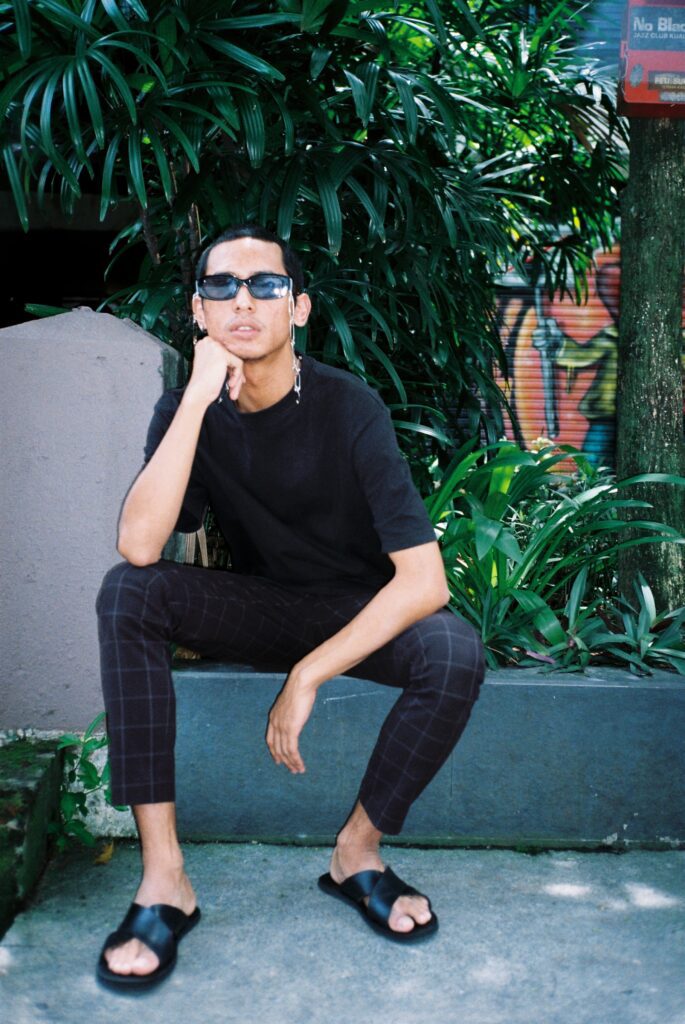
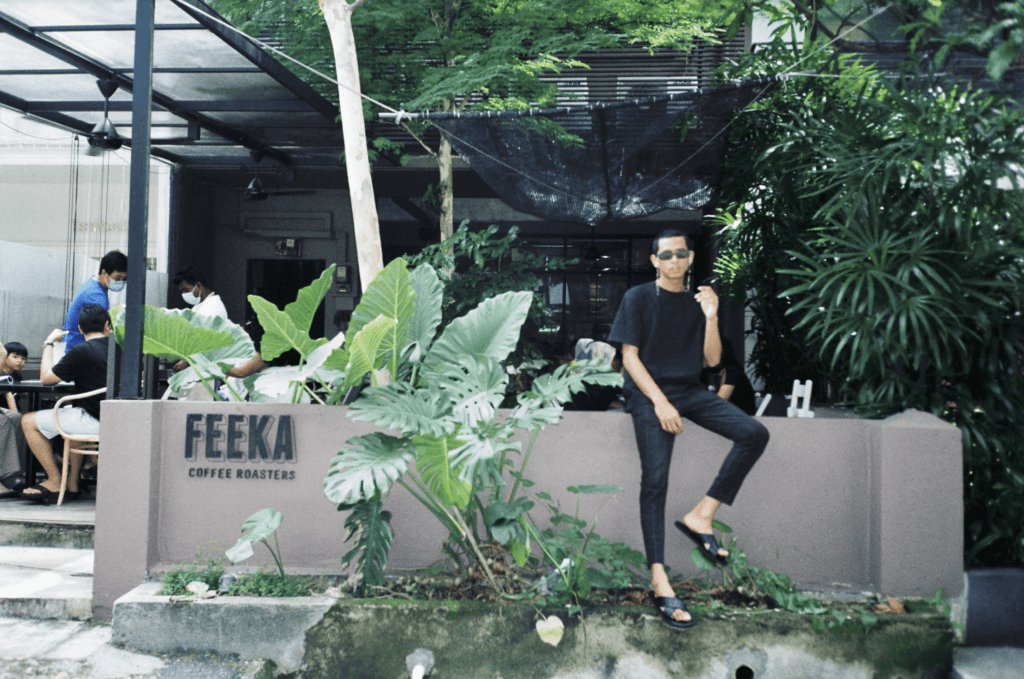
Photo by Pravin Nair (Sponsored by Bang Bang Geng)
The reason behind his vivid colour choices? “Everyone always says that everyone has an aura, a vibe, and it kind of changes day by day so that’s how I think of colour. I definitely see colour as emotion, you know when you think of red you think of anger, lust, and frustration. When you think of white, you think of purity. I always try to use a lot of colours to investigate the relationship between colours… there’s a really strong association people have with colour and it’s always interesting how colours react with each other. I think of them as people you know? They have their own individual personalities.”
He supposes that informing his audience is a personal responsibility as an artist in such a localized, new scene, [reflecting on his own experiences] “My parents never brought me to an art gallery so I kind of had to teach myself what was going on in the art scene like what kind of stuff people are making… when I started going to art galleries, I would post photos about it on Instagram and my followers would be like, ‘Hey, this is cool where is this? Do I have to pay to enter?’”
Adding to his list of responsibilities, he’s also happy to uphold those of a queer artist. As mentioned, Adam’s life is vibrant and so has been his journey. He came out as queer 10 years ago, at just 14 years old during a time when things were even harder than they are now. Unfortunately, it was the reason why he dropped out 2 years later due to severe depression and suicidal thoughts. He worked 5 service jobs from IKEA to H&M before he finally braved up the courage to stop everything else and pursue something he always knew he wanted to as an artist and he doesn’t mind having queerness attached to that identity.
When asked about being pigeonholed by the label he states, “I would say that it is an identity I chose for myself so when I first started exploring my sexuality, I thought I was bi then I thought I was trans, and then gay. But I feel like queer is a very inclusive term that kind of illustrates that being queer is a spectrum. Like with gender queer, you don’t have to be male or female, it’s non-binary, and when I say queer it doesn’t mean I’m 100% gay. I don’t like to see things in black and white and that’s why my art isn’t black and white.”
Creating as a queer artist in Malaysia can be a sticky situation, a careful limbo of dodging laser beams. He agrees that “at times I do feel like it is a risk because I don’t know who’s looking or paying attention to my art and my online social media presence but I do know without openly queer artists or western artists like Keith Haring and all those pioneers, I would not have had the confidence to become an artist. I think if one queer person came up to me and said, ‘Hey! Thank you so much for being openly queer.’ I wouldn’t mind being a struggling starving artist because it gives meaning to my life. I want to inspire others the way those who came before inspired me.”
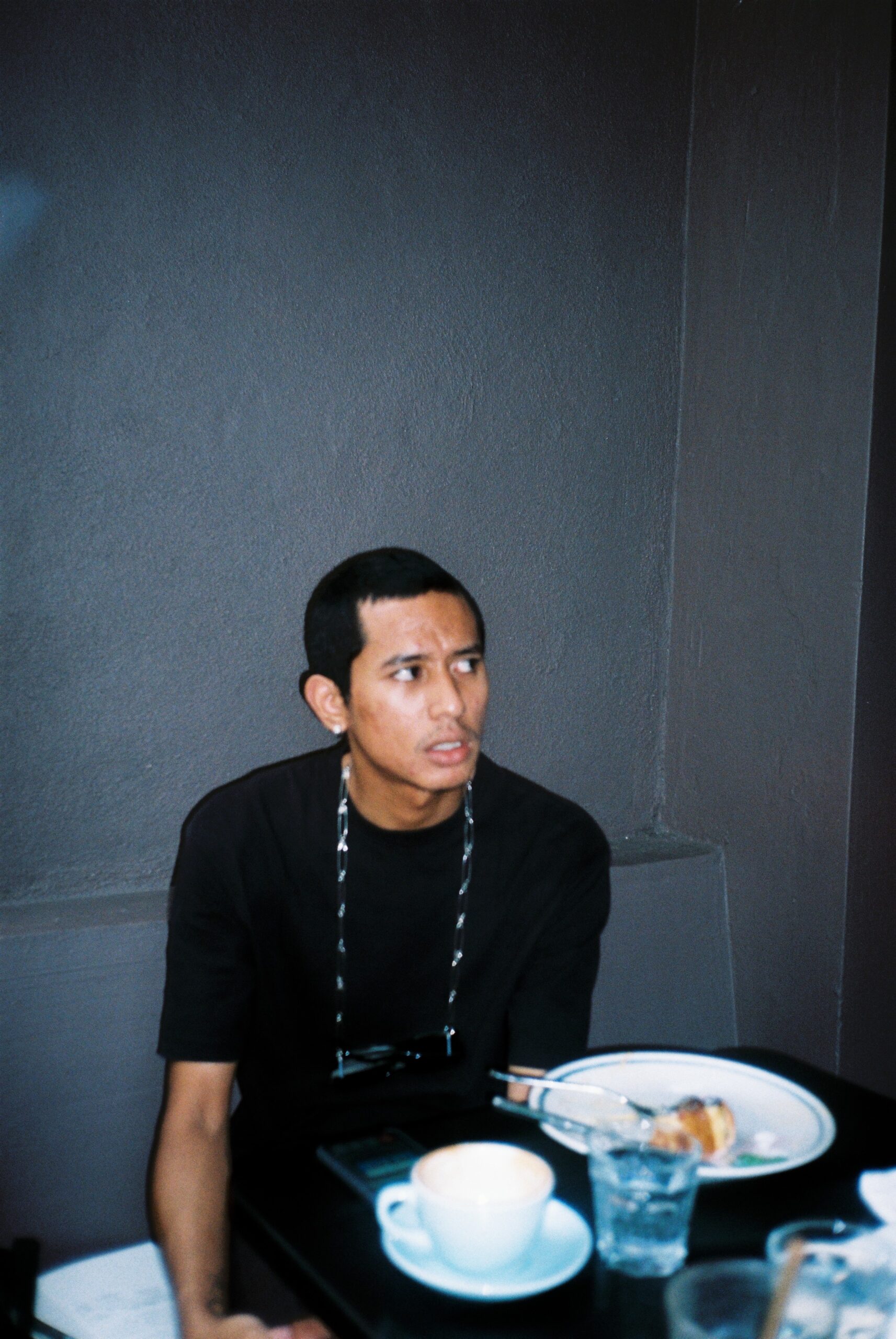
Photo by Pravin Nair (Sponsored by Bang Bang Geng)
When looking through his artwork, his spiritual teachings and beliefs as a practicing Pantheist definitely stand out like in his piece Roh Tanpa Badan (spirit without a body), where the artist used tape to portray the entrapment of our souls within our body. Talking about the religious influence in his work, he tells us, “If you look at Islam, there is a history of Islamic astrology you know? We had astrology before astronomy. We had alchemy before chemistry so there was always that element of spirituality in our physical sciences I think in a way we kind of lost touch with the awe-inducing spiritual power of science and knowledge because science and art, they’re two sides of the same coin.” He goes on to explain that “human life is kind of like a computer and religion is just an operating system”.
To add to his already vast resumé, Adam is also the co-founder of collective and art sale website ArtPasar which currently houses eight artists: Craig Chadwick, Muhd Arif, Zenty Azmi, Ilham Alshahab, Dizrieana Izrin, Aishah Abdullah, Anwar Azriq, Judge Mowgli. “I knew a lot of young and emerging artists trying to put their work out there, selling prints and merch so my friends and I thought let’s compile all of us in one group and sell our art,” he says.
When it comes to creating art, be it for commission pieces or not, his hope is for the people to be able to connect to it: “During MCO, I think everyone was splurging on random stuff on Shoppee and stuff like that so when I saw that I was like yeah people want to buy art but it has to be in a way that it’s easy, accessible, and if we sell the artworks on our website at more affordable price points. I don’t want to say we’re selling out but I want to say that we want to demystify and democratize art. For someone who works in a corporation and makes bank, forking out RM1000 for original artwork is nothing. For young art enthusiasts who are just 20, 21, and still in college, it makes more sense for them to buy a reproduction art print below RM50 because they do want to participate in art, they do want to support the creative community but they do have a limited budget so we have to appeal to that.”
The future for Adam and his practice is bright like the screens on our devices. Inspired by his fellow artist and ArtPasar collective member Ilham, he wants to delve into augmented reality and new media and use technology with traditional mediums like canvas paintings to create something more.
Before heading out to have a smoke, Adam leaves me with some wisdom: “I think one thing I would like to say as a creative is that you really have to put yourself out there physically––networking and going to art events. Not just art events but going to fashion shows, art exhibitions, DJ shows, and live music events because as creatives that’s how we grow. I think it’s really important. I can’t stress this enough: to always have a collaborative instead of a competitive mindset. We can’t think of everyone around us as competition, because that’s the capitalist work ethic. Everyone is a competitor, it’s a zero-sum game where I get more money, I get less money or you get more money, I get less money. We have to be more open to collaborating and I think especially in Malaysia we can draw from such a rich heritage. We can draw from Hindu, and Buddhist heritage and Confucianism, and Islam. Look at the diversity in this country right now. Even at this table, look at us! So yeah, be open!”

